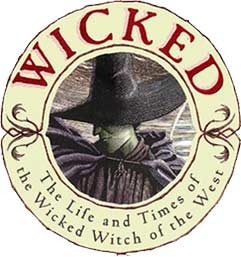Twelve Steps to Great Presentations
You’ve been asked to give a talk about your area of expertise to a group interested in learning what you have to say.
How do you ensure that your talk will be successful? That you will engage your audience, exceed their expectations, and position yourself as a thought leader on the subject?
1. Know your audience – what do they care about?
The best advice I was ever given regarding speaking to an audience was to think less of what I wanted to say, and more of what the audience wanted to hear. In other words, speak to their listening.
Will you be speaking to business executives or college students? What does your audience expect to learn from their interaction with you?
Try to gauge this well, make sure you deliver upon it, and then if you have more to add, do so.
Once you have an audience engaged and they trust that listening to you won’t be a waste of time you can give them what they want plus more.
Continue reading →
Many creative marketing projects get underway without a clear sense of expectations between the marketing folks requesting the project and the creative folks delivering upon it, resulting frequently in lost time and expensive rework.
A marketing brief is the best way for the marketer to clearly lay out a framework for the creative team. The process can be driven by either side – creative or marketing – but both sides need to agree on the brief before the work can commence.
Here’s the Creative Brief Template (click here for printable version) I used at Apple Computer for many years.
Continue reading →
What is Hormesis?
I had a conversation with a retired X-Ray specialist physicist who claimed that radiation in low doses was actually good for you, citing the phenomena called “hormesis”.
What is hormesis? It’s a process in a cell or organism that shows two phases of response to increasing exposure to toxins – the first phase beneficial at low doses, then moving to detrimental as the amount of exposure increases.
Google hormesis and you’ll find thousands of studies displaying this effect.
Continue reading →
Heard on the net:
Put eight monkeys in a room. In the middle of the room is a ladder, leading to a bunch of bananas hanging from a hook on the ceiling.
Each time a monkey tries to climb the ladder, all the monkeys are sprayed with ice water, which makes them miserable. Soon enough,whenever a monkey attempts to climb the ladder, all of the other monkeys, not wanting to be sprayed, set upon him and beat him up.
Soon, none of the eight monkeys ever attempts to climb the ladder. One of the original monkeys is then removed, and a new monkey is put in the room. Seeing the bananas and the ladder, he wonders why none of the other monkeys are doing the obvious, but, undaunted, he immediately begins to climb the ladder. All the other monkeys fall upon him and beat him silly. He has no idea why. However, he no longer attempts to climb the ladder.
Continue reading →

How did the Wicked Witch of the West, from Frank Baum’s Oz stories, get to be so wicked? Gregory Maguire tells her story, in Wicked: The Life and Times of the Wicked Witch of the West . Author of Confessions of an Ugly Stepsister, Maguire seems to revel in turning our beloved fairy tales upside down, and having us rethink our cherished notions of absolute good and evil. The Wicked Witch wasn’t born a witch, nor wicked. In Maguire’s delightful telling, we learn of Glinda’s obsession with status and fashion, the Wizard’s inhumanity, and the friendships, loves, and lost loves of little green Elphalba, the story’s moral center, who is ultimately destroyed by innocent Dorothy. This tale is more real, and more like life as we know and experience it, than the original. There’s always a different side to a story, and in the case of Oz, this is it. A great read from start to finish. I could not put it down.
. Author of Confessions of an Ugly Stepsister, Maguire seems to revel in turning our beloved fairy tales upside down, and having us rethink our cherished notions of absolute good and evil. The Wicked Witch wasn’t born a witch, nor wicked. In Maguire’s delightful telling, we learn of Glinda’s obsession with status and fashion, the Wizard’s inhumanity, and the friendships, loves, and lost loves of little green Elphalba, the story’s moral center, who is ultimately destroyed by innocent Dorothy. This tale is more real, and more like life as we know and experience it, than the original. There’s always a different side to a story, and in the case of Oz, this is it. A great read from start to finish. I could not put it down.
In the late 1950s, while in his eighties, Carl Jung sat down to write his autobiography, his story of how he evolved and developed insight into the pysche that now forms the basis of so much of modern pyscholgy. One cannot help but share the awe with which he holds the inner world as it unfolds before him. He writes,
“Life has always seemed to me like a plant that lives on its rhizome. Its true life is invisible, hidden in the rhizome. The part that appears above ground lasts only a single summer. Then it withers away – an ephemeral apparition. When we think of the unending growth and decay of life and civilizations, we cannot escape the impression of absolute nullity. Yet I have never lost a sense of something that lives and endures underneath the eternal flux. What we see is the blossom, which passes. The rhizome remains.”
Memories, Dreams, and Reflections is a classic, first published in 1961 and every bit as modern and relevant today as then.
